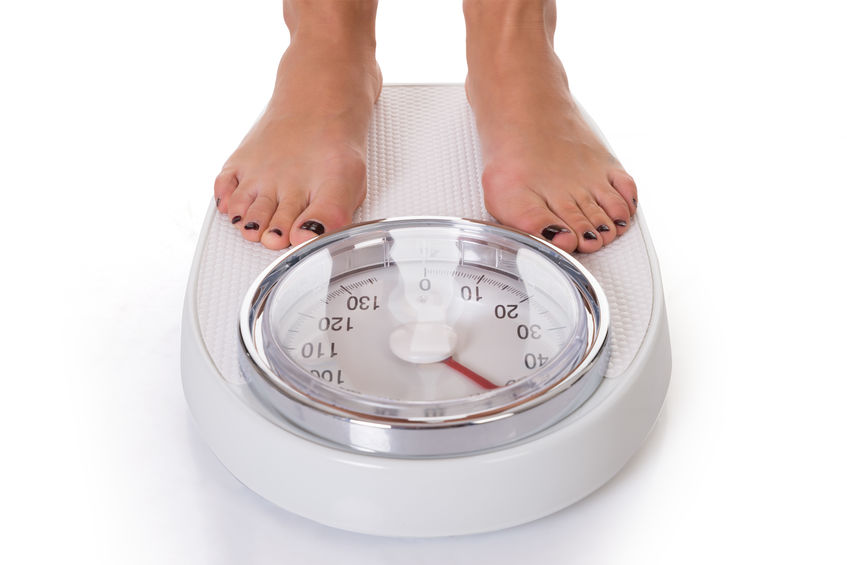Now that the keto diet has resurfaced from the shadow of the traditional food pyramid, more and more revisions of the diet are starting to emerge. From targeted keto to the most recent fad called the keto zone diet, it can be difficult to choose between them. Some are specifically designed for athletes, while others are focused on making the classic ketogenic diet easier to follow. And then there are some that are designed by the marketing machine to get keto dieters to buy into information and products. So how do they differ? And which one is better for you and your wallet?
What Is All The Fuss With Keto?
Before diving into the different variations of the diet, it is important to understand the basics of the diet to help you decide whether this diet is suited to you and your goals. The premise of a keto diet is to shift your body into a metabolic state known as ketosis. Essentially we are tricking our bodies into a fasting state through the elimination of carbohydrates and sugar.

When we eat carbohydrate-rich food, the body breaks it down into glucose to provide the cells and organs with energy. When there is a surplus of energy, the body stores the excess calories as fat, which ultimately leads to undesirable weight gain. However, when glucose is restricted, our bodies seek an alternative source of energy – fat. Fats are broken down by the liver and turned into ketone bodies, which are then circulated and used for energy by the brain, heart, and cells.
As we become more fat adapt, hormone, blood sugar, and insulin levels start to stabilize, which doesn’t just lead to weight loss, but also helps to prevent and even manage a few chronic diseases. A comparison study done on both a keto and a low-calorie low-fat diet showed that keto dieters had lost 2.2 times more fat than the low-calorie group. The findings also showed that both HDL cholesterol and triglyceride levels had also improved in the keto group.
Here are a few more benefits of a low carb diet:
- Weight loss
- Reduced acne
- Improved heart health
- Neurological protection
- Reduced seizures
- Reduces the risk of cancer
- Reduced risk of type 2 diabetes
- Improved longevity

After examining these benefits, it’s easy to see why people are turning to ketones for energy over glucose. Following a ketogenic lifestyle can be difficult at first, but with all these benefits up for grabs, many feel that giving up sodas and bread is a small price to pay. However, the restrictive nature of the diet is not suitable for everyone and can be hard to maintain in the long run. This is the reason why many have formulated their own approach to the low carb lifestyle, which in some cases can be easier to follow.
These are the most common variations of the keto diet:
- The Standard Keto Diet
- The Keto Zone Diet
- The Targeted Keto Diet
- The Cyclical Keto Diet
The Keto Diet – Where It All Began
The standard or strict keto diet is the traditional approach to inducing a state of ketosis. The low-carb high-fat diet was developed and introduced in the early 1920s and was used as a dietary therapy for epileptic patients. While the medical literature of the diet can be traced back to the physicians of ancient Greece, it was Dr. Russell Morse Wilder who coined the term “ketogenic diet” and built on the findings of previous studies.
Early research had suggested that epilepsy could be treated by periods of fasting and limited rations of food. The first modern study of the diet, which was conducted in 1911, found that periods of purging and fasting had benefited 20 epileptic patients by reducing the number of seizures they experienced and improving their mental capabilities overall.
However, further research showed that seizures returned shortly after the fast had ended. Unfortunately, long term fasting is not sustainable and can be dangerous if not done properly. This is where Wilder came up with the unique concept of putting the body into a constant ‘fasting’ state by elevating ketone body levels in the blood.
The evidence showed that three compounds acetone, acetoacetate, and beta-hydroxybutyrate, which is known as ketone bodies, were present during starvation periods or when carbs were restricted and replaced with high-fat foods.
The keto diet proved to be successful especially for younger adults and children suffering from epilepsy. Unfortunately, after the rise of anticonvulsant medications, the keto diet treatment was abandoned and replaced with drug therapy such as phenytoin and sodium valproate.
It wasn’t until 1994 that the keto diet made it’s revival and was used by 75 centers in 45 countries of the world. Further research has studied the various benefits of the keto diet, which as it turns out is not only limited to epilepsy, but also shows promise for weight loss, neurological disorders, type 2 diabetes, metabolic dysregulation, and certain cancers. This classic ketogenic therapy diet forms the basis for most other low carb diets such as the keto zone diet.
How Does The Standard Keto Diet Work?
Macronutrient ratio: 5 – 10% carbohydrates, 15 – 20% protein, and 75% healthy fats
The standard keto diet (SKD) involves planning all your meals around healthy fat sources like salmon, grass-fed beef, full cream, butter, and cheese. To reach the fat quota for the day, you will need to eat 150 grams of full-fat items, which is about three times more than a standard high carb, low-fat diet. Carbohydrates will need to be closely monitored and limited to no more than 50 grams per day in order to turn your body into a fat-burning machine. Reaching for carbohydrate-rich foods like a single blueberry muffin is enough to push you over the 50-gram limit and will prevent your body from shifting into ketosis. Generally, most grains, starchy veggies, and high fructose fruits are forbidden on the SKD for this reason.
What sets the standard keto diet apart from most low carb diets is that it recommends a moderate amount of protein. While most diets require a significant amount of protein, on the keto diet, it is kept to a minimum while fats dominate the portion of the plate. The reason behind this is because the body can convert proteins into glucose via a process called gluconeogenesis, which means that eating too much of it can prevent you from reaching ketosis.
It typically takes about 4 days to a week to enter ketosis with these macronutrient ratios, however, many people turn to high-quality exogenous ketone supplements such as Approved Science Keto to elevate ketone blood levels in a shorter time and replenish vital electrolyte levels they may be losing during the metabolic shift.
Who Will Benefit From The Standard Keto Diet?

As with any diet, there is a hot debate around the keto diet, but before giving into headlines, it’s best to be armed with the facts. The keto diet is beneficial for those who want to lose weight sustainably and keep it off.
One study showed that more than 19,000 keto dieters have experienced a significant drop in weight and most have managed to keep it off for a year with very few side effects. Dieters in the study lost an average of about 10 kilograms (22 pounds) in body weight and 5.5 kilograms of fat mass after an average of 2.5 cycles. Despite eating fewer calories, users also feel fuller for longer and have more energy. This is because of the stabilized blood sugar levels, which results in a more stable and sustainable rush of energy.
In addition to weight loss, the diet is also beneficial for those who want to reap the added benefits of longevity and reduce the chances of developing diabetes, heart disease, and neurological disorders later in life.
If you suffer from any chronic illness, type 1 diabetes or kidney damage, it is best to talk to your doctor before pursuing the keto diet.
How Does The Keto Zone Diet Work?
Macronutrient ratio: 10% carbohydrates, 20% protein, and 70% healthy fats
The Keto Zone Diet created and published by Dr. Don Colbert in 2017 is the latest variation of the SKD. Those who try to find out exactly what the diet is and how it works will struggle to find much information about it without purchasing and reading the book. And the title of the book is enough to get anyone to buy it. ‘Burn Fat, Balance Appetite Hormones, and Lose Weight’ is enough of a hook line and sinker. But what exactly makes this diet so much more effective than the keto diet?
The Keto Zone Diet falls under the same umbrella as the standard keto diet, but with a slight difference after you have entered ketosis or ‘the keto zone’ as Dr. Colbert describes it. The book describes how a healthy high fat low carb diet has benefited most of his cancer patients and encourages readers to forget the bad connotations associated with fatty foods. The keto zone diet outlines general macronutrient guidelines, which are the same as the standard keto diet, 10% carbs, 20% protein, and 70% healthy fats, however, there is a strong emphasis on sourcing carbs from healthy vegetables only.
Once the body has shifted into ‘the keto zone’, it is recommended that dieters increase their carb intake according to their personal Keto Carb Limit (KCL) number for long term weight maintenance. To find this number, 10 grams of carbs are introduced every week after only eating 20 grams during the fat adapt stage.
Ketone levels are tested every week after the carb limit has been increased. Once the ketone test reads 0 for blood ketone levels, that is your KCL number. Once the KCL number has been found, which is usually around 75 to 100 grams of carbs per day, Colbert recommends eating below that number to stay in a mild but healthy state of ketosis over a long period of time.
Who Will Benefit From The Keto Zone Diet?
Since the diet is exactly the same as the standard keto diet, it can be beneficial for losing weight, and long term preventative measures against chronic illness.
The downside to this type of diet is that once you have gotten into the habit of restricting carbs, it is encouraged to introduce more after the initial stages of weight loss. For some, this can cause you to go back to old habits of overindulging in carbohydrate-rich foods and the process of getting fat adapt would need to start all over again.
With that being said, it is also important to know that the information in the book is a bit vague as to how it is so different from the standard keto diet. The exaggerated claims made by the author about how he ‘revolutionizes the dieting industry by helping you lose weight without starving yourself’ is a bit far fetched as most of his findings are piggybacked from studies conducted on the traditional keto diet.
All the information in the keto zone book is freely available online and those who are interested in following a low carb lifestyle can source the very same advice and more without spending an extra $12.79.
Unfortunately, this is one variation of the keto diet that has been formulated by the marketing machine to ruse dieters into thinking it’s a revolutionized diet while also encouraging them to spend money on repetitive information and expensive products.
How Does The Targeted Keto Diet Work?
Macronutrient ratio: 15% carbohydrates, 20% protein, and 65% healthy fats
The targeted keto diet (TKD) is another spin-off of the traditional keto diet that is specifically targeted for individuals who lead a more active lifestyle. The diet involves following the SKD as normal during the day with an additional 25 grams of carbs 40 to 60 minutes before a workout. Many TKD followers have found that the additional bump in carbs helps to improve performance and strength during workouts. While the idea is to turn yourself into a fat burner instead of a glucose burner, the muscles still need some fast-acting fuel during aerobic exercise. Higher activity levels will cause the body to utilize the additional glucose almost immediately to enhance muscle function and to repair them.
Another benefit of this targeted approach is that it helps to increase insulin levels. You may be thinking this is counterproductive seeing that raised insulin levels are harmful, however, spikes in insulin can be helpful…at the right time. Research has found that when hyperinsulinemia (increased blood insulin) is induced at the right time, it helps to stimulate protein synthesis, which helps to prevent muscles from breaking down and encourages more muscle growth.
The foods you choose to source carbs from still matter and the quality of foods still need to be taken into account before grabbing a slice of pizza or doughnut before the workout. High glycemic carbs are absorbed and utilized by the body differently. Galactose and fructose should be avoided because they are absorbed by the liver instead of the muscles and is converted into glycogen, lactate, lipids, and glucose. The best type of carbs to fuel your workouts should contain dextrose and glucose. These are absorbed by the muscles and used to replenish glycogen stores before a workout. High-fat meals should also be avoided just before hitting the gym because they take much longer to digest. However, medium-chain triglycerides (MCT’s) are an exception to this rule because of how quickly they are digested and converted into ketones via the liver.
Who Will Benefit From The Targeted Keto Diet?

As we mentioned before, the targeted keto diet is beneficial for anyone who leads a more active lifestyle and requires more carbs than what the standard and keto zone diets delivered. Those who frequently engage in muscle building workouts or high-intensity training such as running, tennis, or swimming for extended periods will get the most reward out of this low carb diet. Unfortunately, individuals who only visit the gym for moderate exercise a few times a week may get kicked out of ketosis with a higher carb intake.
If you are planning on following this variation of the diet, it’s important to note that it should only be implemented after a month or two of following the traditional keto diet. This is to ensure that your body has become fat adapted and is used to burning on ketones for energy over glucose.
Once it is used to burning fat as the preferred source, it will then be easier for the body to become keto adaptive, meaning that it can switch between burning both sources with a moderate amount of carbs.
How Does The Cyclical Ketogenic Diet Work?
Macronutrient ratio: On keto days: 5 – 10% carbohydrates, 15 – 20% protein, and 75% healthy fats | On ‘refeed’ days: 60 – 70% carbohydrates, 15 – 20% protein, and 5 – 10% fat.
Another common variation of the SKD is the cyclical ketogenic diet (CKD). The cyclical or keto cycling involves following a strict keto regime for five days followed by two days of carb refeeding. On these two days, instead of sourcing 75% of calories from fat, it is sourced from carbs. There are no set rules on what carbohydrates to eat, but it should preferably be from healthy sources to help make the shift back into ketosis easier.
A few examples of nutritious carbohydrate-rich foods include:
- Beans
- Lentils
- Oats
- Quinoa
- Brown Rice
- Sweet potatoes
- Whole wheat pasta
Carb refeed days are normally followed with intermittent fasting the next day to get back into true ketosis again.
Who Will Benefit From The Cyclical Ketogenic Diet?

This variation of the SKD is popular among athletes who require more carbohydrates for muscle and endurance on competition days. Studies have also shown that athletes following a very low carb diet experienced an improvement in performance after they have consumed more carbs periodically.
While the research is limited when it comes to the CKD, there is evidence that keto cycling for 24 or 42 hours can also help decrease symptoms of the keto flu. Some who have trouble sticking to the strict keto diet use the CKD to reap some of the benefits as well.
If you are not an athlete, it may be best to speak to a healthcare professional beforehand as the diet can cause water levels in the body to fluctuate, which can lead to unpleasant side effects such as dizziness.
Standard, Targeted, Cyclical Or Keto Zone Diet: Which Is Best?

There is no definitive answer to which variation of the keto diet will give you the quickest and best results. It is all about listening to your body and monitoring your macronutrients in order to lose weight safely and sustainably.
If you want to rev up weight loss with all the added benefits of ketones, then the standard keto diet can help you reach those goals. If you are more active or participate in high-intensity exercise, then the targeted or cyclical diets may be the best way to fuel performance without compromising ketosis.
Unfortunately, there are some variations of the diet like the keto zone, which take the principles of the standard keto diet and slap an expensive label on it. There are no hidden secrets behind the diet, just an extra $12 of information that is readily available online. If you are serious about going low carb, it is best to stick to proven methods that have been tried and tested without the sales tactics.

